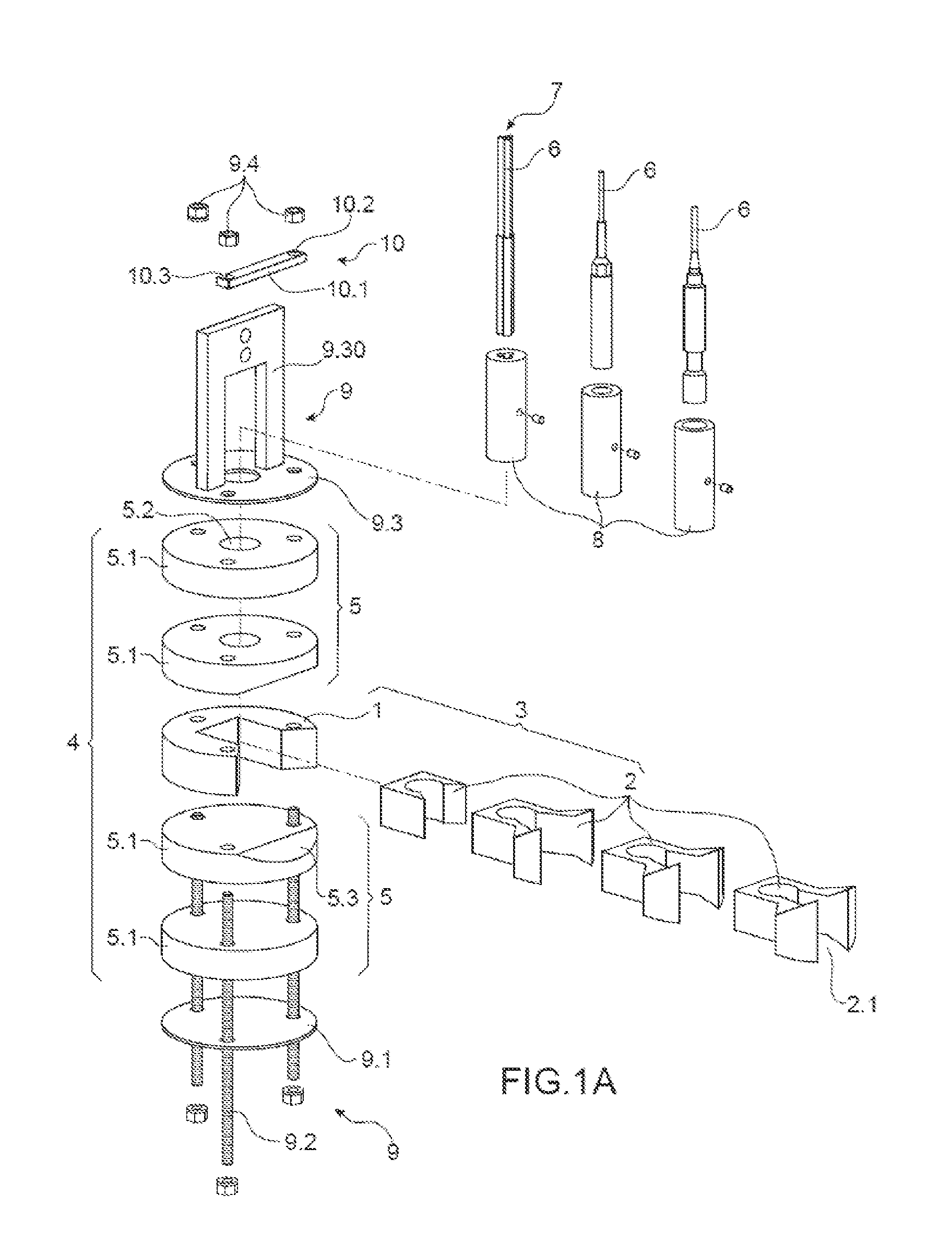Radiological characterization device protected against parasitic ionizing radiation sources
a radiation source and radiation characterization technology, applied in radiation measurement, instruments, photometry, etc., can solve the problem of masking hot spots of lower intensity
- Summary
- Abstract
- Description
- Claims
- Application Information
AI Technical Summary
Benefits of technology
Problems solved by technology
Method used
Image
Examples
Embodiment Construction
[0033]Reference will be made to FIG. 1A, which is an exploded view of an example of a radiological characterisation device according to the invention. FIG. 1B shows a transverse section of the same radiological characterisation device according to the invention. It comprises a collimator holder 1 intended to accept a collimator 2. The collimator 2 is substantially in a U shape with a bottom from which two arms start that contribute to delimiting the opening 2.1 of the collimator 2. The collimator holder 1 can be substantially in a U or C shape, the bottom of the U of the collimator being housed in the collimator holder 1. Thus the collimator 2 is exchangeable and the collimator holder 1 is able to accept collimators 2 having openings 2.1 of different sizes but the same base. FIG. 1A shows a set of four collimators 2 that can be installed on the collimator holder 1 each in their turn. These four collimators 2 have openings 2.1 of different sizes, corresponding for example to angles o...
PUM
 Login to View More
Login to View More Abstract
Description
Claims
Application Information
 Login to View More
Login to View More - R&D
- Intellectual Property
- Life Sciences
- Materials
- Tech Scout
- Unparalleled Data Quality
- Higher Quality Content
- 60% Fewer Hallucinations
Browse by: Latest US Patents, China's latest patents, Technical Efficacy Thesaurus, Application Domain, Technology Topic, Popular Technical Reports.
© 2025 PatSnap. All rights reserved.Legal|Privacy policy|Modern Slavery Act Transparency Statement|Sitemap|About US| Contact US: help@patsnap.com



